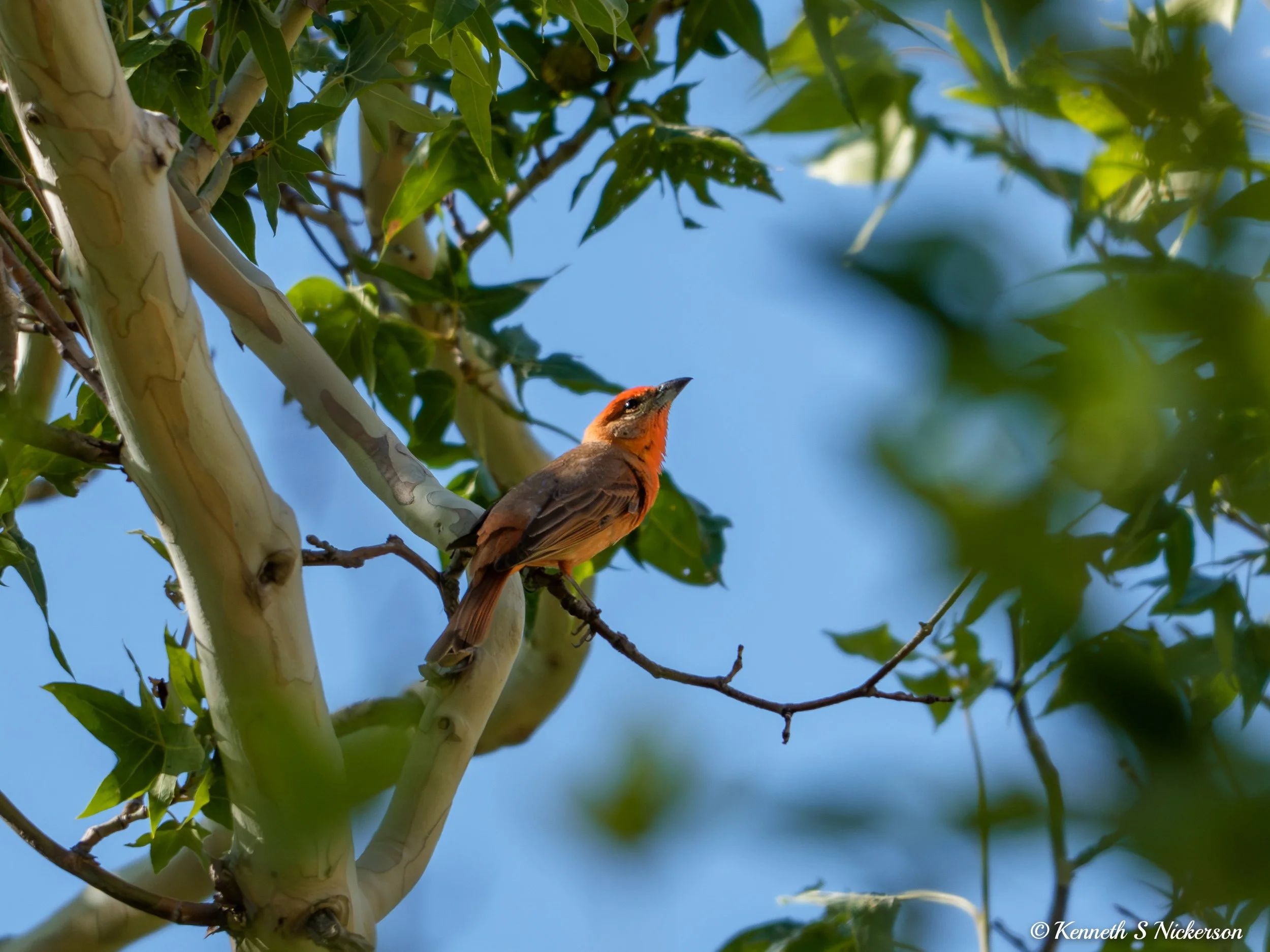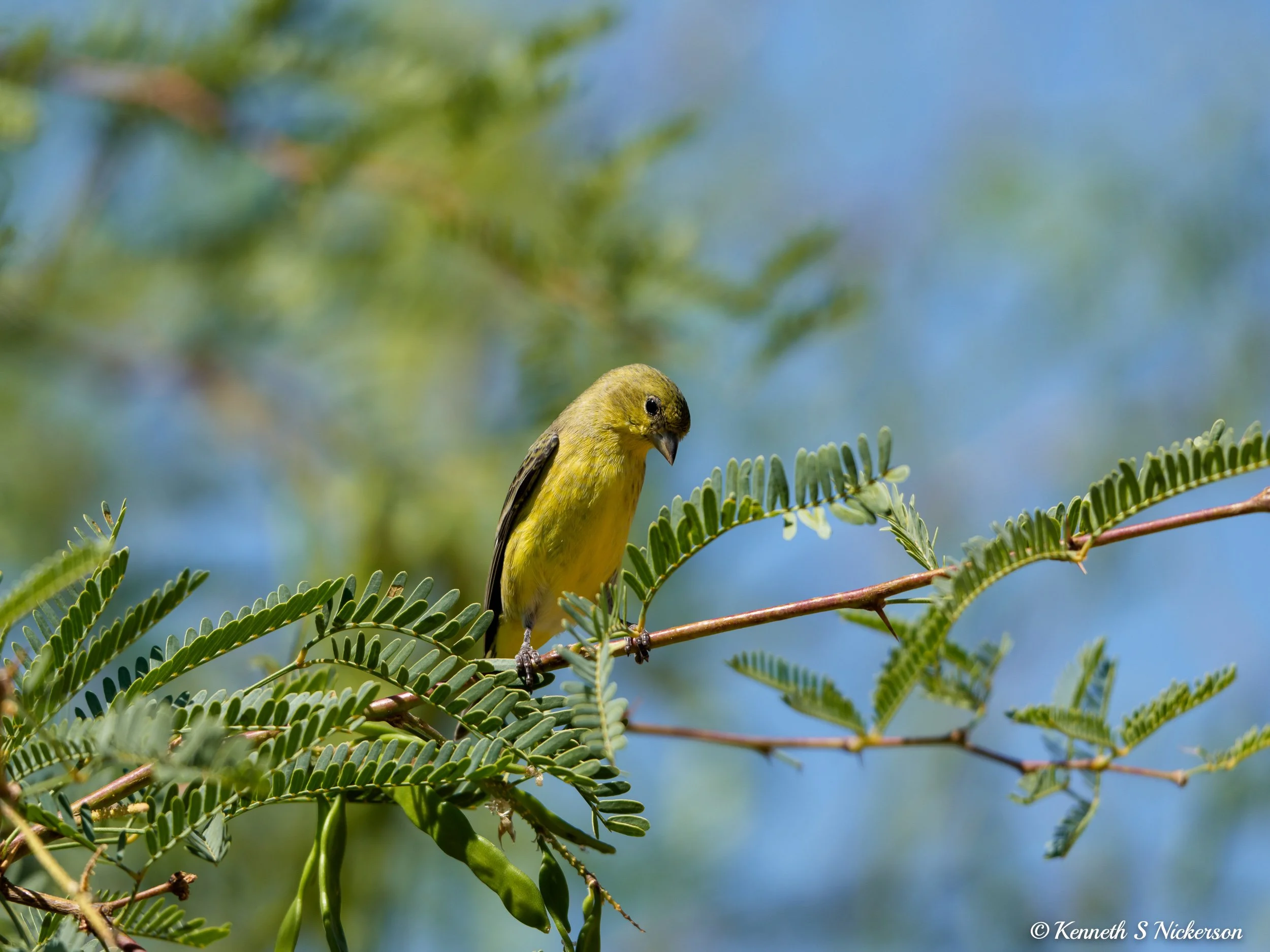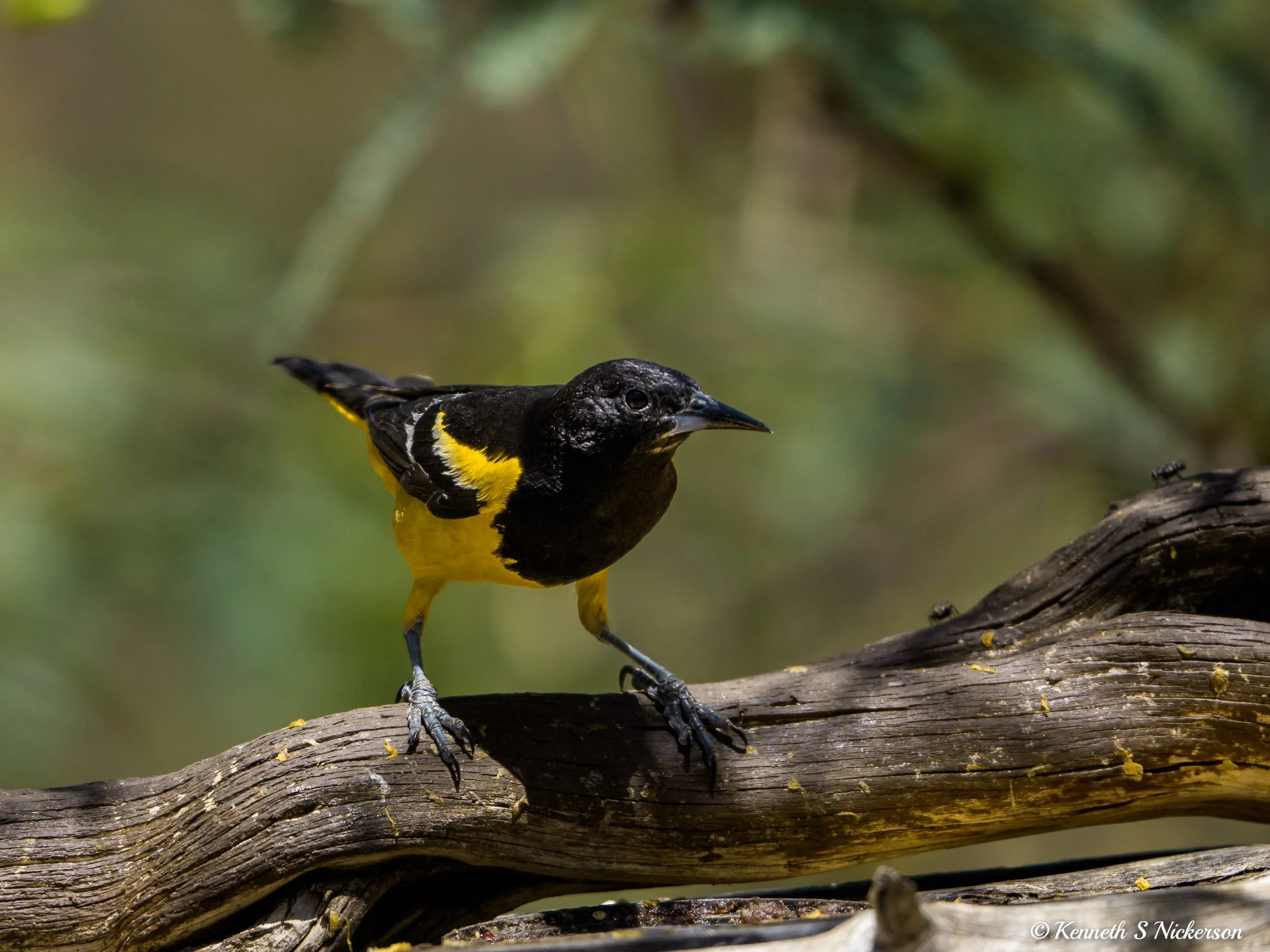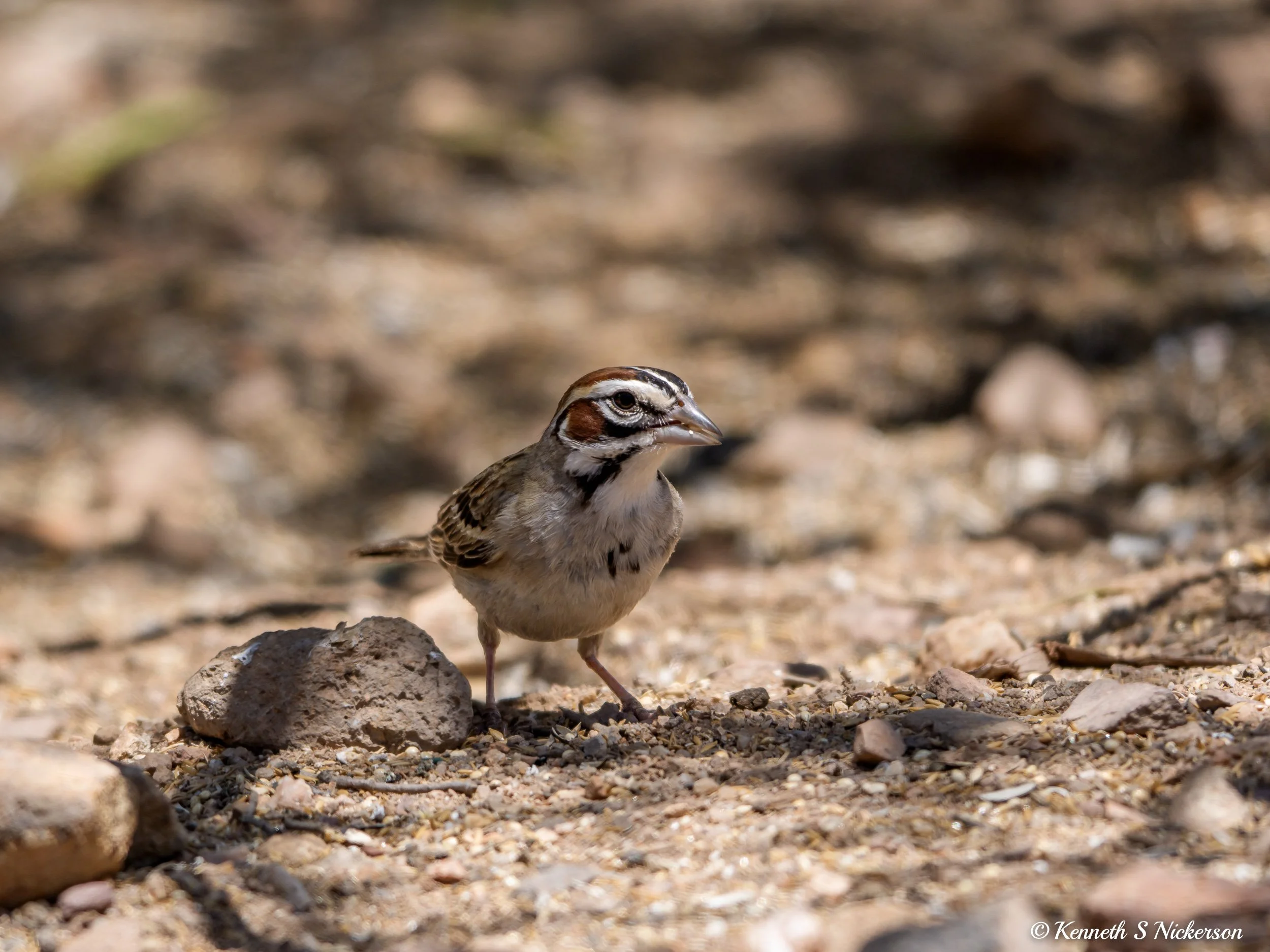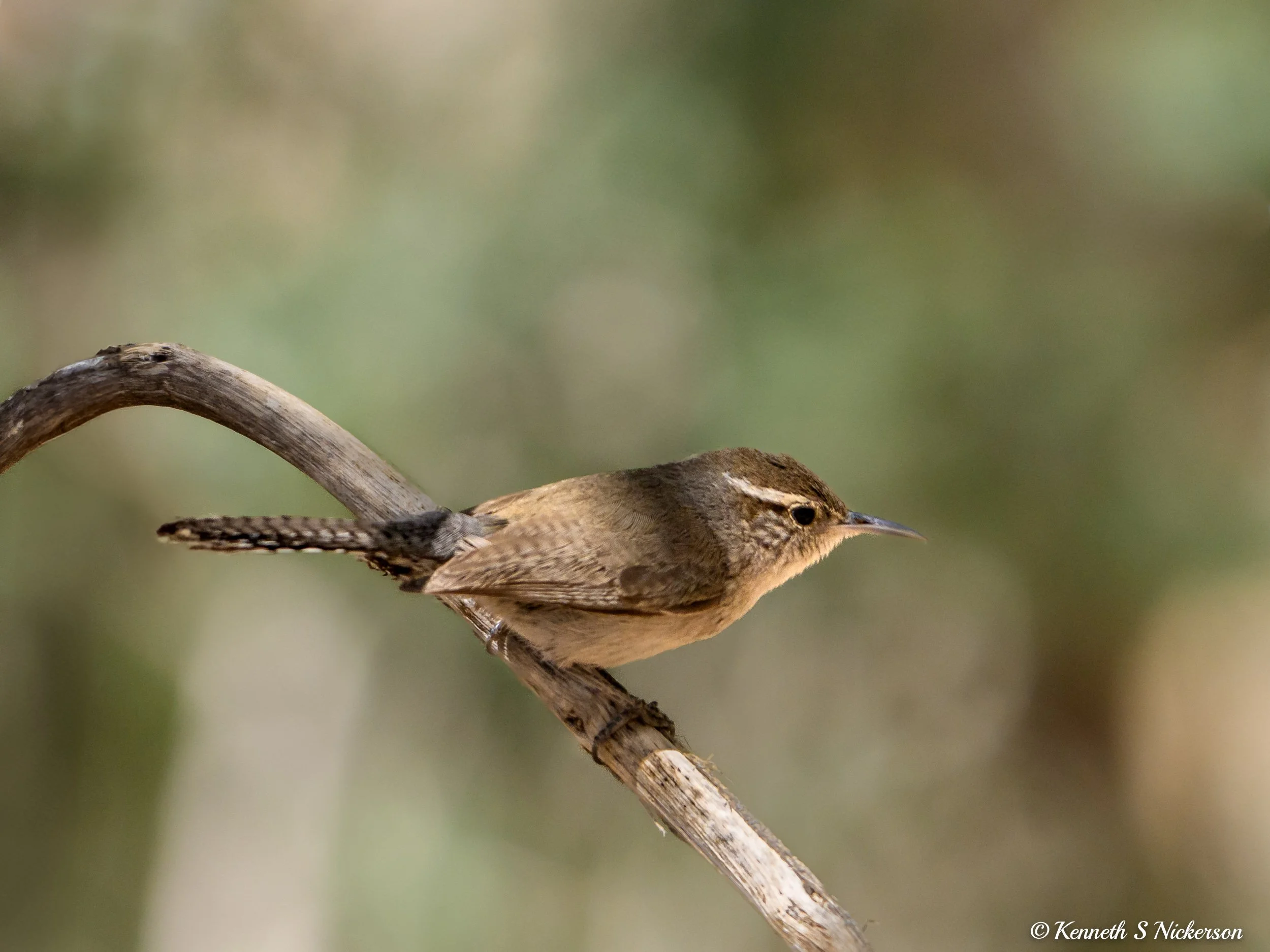Arizona Birding - Day 3
I started my third day by hiking into the Nature Conservancy’s Ramsey Canyon Preserve which boarders the Ramsey Canyon B&B where I was staying. One of the first birds I encountered was this Painted Redstart. In Massachusetts, we have the American Redstart. That bird has orange on its wings instead of white, and its breast is much more of a reddish orange compare with the bright red of the Painted Redstart. While I do like the American Redstart, I prefer the Painted Redstart. This one was jumping around deep in the tree branches until suddenly it popped across the path and landed for a few moments on this branch providing a lovely clean shot to highlight its beauty.
As I hiked, I saw several Acorn and Ladderback Woodpeckers, but eventually I saw the Arizona Woodpecker. To call it an Arizona Woodpecker certainly represents a US centric naming framework since 95% of its range is in Mexico. Within the US, this species can only be found in the mountains of Southeast Arizona and the very southwest corner of New Mexico. It is easily recognizable by its brown back compared to the black and white backs of almost all other US woodpeckers.
I also added another flycatcher to my life list, the Greater Pewee shown above. One difference between a much more experienced birder and me is that I am still learning my birds. Consequently, when I am hiking, I often take a “photograph first, identify later” approach. As a result, when I am in a new area, there are frequently surprises when I am on my computer identifying the birds in my photos.
In my last post, I had a photo of a male Summer Tanager. This is a male Hepatic Tanager. The male Summer Tanager is red all over while the male Hepatic Tanager has the grayish back and cheek.
After my hike in Ramsey Canyon, I drove south a bit to the Ash Canyon Bird Sanctuary. Like many birding spots in southeastern Arizona, this is essentially a large residential yard which has been converted into a bird sanctuary, in this case in 2002 by Mary Jo Ballator, a birder and naturalist. When she passed away in 2019, a generous donor offered to donate the funds to Southeastern Arizona Bird Observatory to purchase the property so that it could be maintained for the birds and remain open to the public. Above is one of the many Lesser Goldfinches there.
One of the highlights of my time at the Ash Canyon Bird Sanctuary were the three different oriole species I added to my life list. This is the Bullock’s Oriole. It is identified by the neat black line through its eye and the white patch on its wing. It can be found throughout much of the western US.
The next oriole I saw was the Scott’s Oriole. Its bright yellow color is both striking and distinctive. An interesting fact about the Scott’s Oriole is that it is one of the very few bird species that are predators of the monarch butterflies. Monarchs concentrate toxins from milkweed plants in their bodies, so most birds avoid eating them. Scott’s have learned to taste the butterflies and only eat the ones with low levels of toxins in them.
The final oriole I saw was the Hooded Oriole. Depending on location, the colors of the males can range from flame orange in Texas to bright yellow farther west in California. This one seems to be a nice intermediate color, not as orange as the Bullock’s above nor as yellow as the Scott’s. I confess that when I first saw it I was confused by its name as I saw it as having a black chin rather than yellow/orange hood.
Ash Canyon was nicely setup for photography in that the trees, branches, and plants were neither dense nor deep. This meant that it was easy to get photographs of birds with clean looks and isolationed from background distractions. Here is a White-breasted Nuthatch in a classic nuthatch pose. White-breasted Nuthatches are common here in Massachusetts and throughout almost all of the lower 48 states.
This is the Mexican Jay, one of three jays I saw on my Arizona trip. The other two are the Woodhouse’s Scrub-Jay and the Steller’s Jay. While all of these jays can overlap, the Steller’s Jay prefer the higher altitudes, the Woodhouse’s Scrub-Jay the lower altitudes, and the Mexican Jay prefers the middle. On my trip, my sightings matched these general altitude ranges.
This Lark Sparrow was another addition to my life list. While the Lark Sparrow can be found throughout the significant majority of the plains and western US, I had never come across it before. As this photo shows, it has a striking and sharply defined head pattern with white, black and chestnut coloring.
This is a Bewick’s Wren. I had seen a number of them since I had arrived in Arizona, but I had not been able to capture a reasonable photo of one until this shot. The Bewick’s Wren used to be found in the eastern US, but at this point they have become quite rare here. It is believed that the House Wren have played a major role in their decline as the House Wrens have expanded their range.
My final shot for today’s post is of a pair of juvenile Verdin. Once these birds become adults, their heads will turn yellow, and they will develop a slight chestnut shoulder patch.
I expect to create two more posts from my Arizona trip this week. The first will be birds from my time in the extremely small town of Portal near the New Mexico border. The second will showcase some of the wildlife and scenery I saw on my trip.



